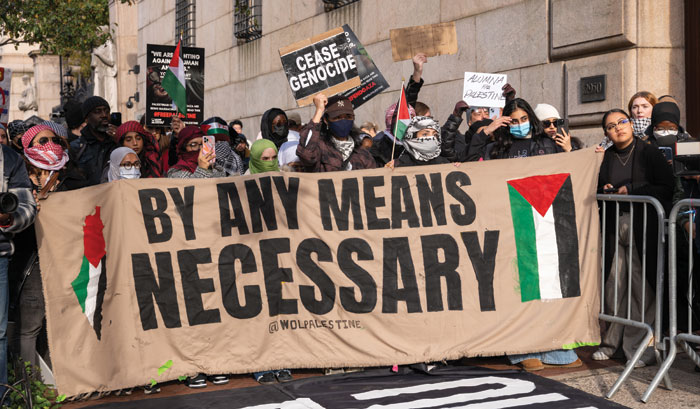Kä-pä-r the Hebrew word root of Kippur, as in Yom Kippur, translates to cover or to ignore. Through the narrowly practiced Kaparot with live chickens, bought for around $20 to $30 apiece, waved over one’s head to transfer one’s sins to the animal. The chickens, or their value must be donated to the poor. In addition to prayer and repentance, hundreds of people and their families gave Tzedakah in this manner to avert the most awful judgments that Yom Kippur could bring. Despite verbal and written assurances these people received, their Tzedakah, or philanthropic justice, never reached the promised poor. Hundreds of chickens went directly into the garbage and landfill rather than to the needy.
Judaism’s Sages recognized that it is harder to disburse charitable funds than it is to raise those funds. Therefore the Talmud prescribes that at least two people must be present when collecting food or money for the communal fund. Three people are needed to distribute it to the poor. In the case of this year’s chicken Tzedakah there were many people collecting the price of the chickens and kosher killing them, but literally no one to distribute them to the poor or needy. The killed chickens went directly to the Department of Sanitation garbage truck at all the sites I observed in the Pico-Robertson area.
No chicken feathers were plucked, no butchering, no refrigeration or any preparation of the chicken Tzedakah for human or animal consumption was observed. The typical chicken Tzedakah ruse had people paying for their chicken Tzedakah, usually receiving a receipt for their donation at a table set up outside a temporary structure in a parking lot, later repurposed as a Sukkah. The temporary structure was partitioned so that the person completed a Kaparah prayer with a 5 to 7 lb. live chicken Tzedakah, handed it over to one or more kosher slaughterers who immediately slit the chicken Tzedakah’s neck and tossed the still reflexively moving chicken Tzedakah into a large 55 gallon barrel covered with a lid with a chute to prevent many of the still moving chickens from inadvertently getting out. After filling the 55 gal. garbage bag lined drum with about 10 chicken Tzedakahs one of the slaughterers removed the usually opaque black plastic bag, tied the top, then took and tossed it onto a growing, several foot high, pile of similar bags on the parking lot next to the temporary structure.

This was the only handling of just killed, or up to 72 hours killed, chickens until they were picked up by the Department of Sanitation. In the words of the non-Jewish Department of Sanitation municipal employee tossing the bags onto his garbage truck: “What a waste of food.”
I estimate that I personally saw at two locations over 50 large garbage bags of dead chickens, some of whom I could feel or see through the plastic. That would be about 500 chickens that people had paid minimally an aggregated $10,000 for that they thought was going to Tzedakah. I witnessed several people being directly assured their chicken Tzedakah would be given to the needy. Other Los Angeles chicken Tzedakah sites also had their killed chickens hauled to the landfill and a conservative estimated total of $50,000 to $100,000 of intended Tzedakah may have been direct to the landfill during this year’s Days of Awe. All indications locally point to that this is not a new phenomenon, and the total of thrown away Tzedakah could have easily reached over a million dollars over the past decade or so.
It's been sixteen years since a Los Angeles Jewish Population Survey gave information about the community’s needy. This chicken Tzedakah situation is a direct outcome of not expending the resources communally to know who and where the community’s poor or needy are. Ignore the demography of the poor or needy and it's impossible to effectively contact and get services or Tzedakah to them. Without communal research there can be no documented communal benefit. Egregious communal harm and misdirection may be dressed up by the fundraisers to appear beneficial and it's not the exclusive characteristic of any one particular segment of the community. Jewish individual, organizational and communal oversight mechanisms and culture in Los Angeles demonstrate an aversion to their responsibilties.
When the needy and poor are invisible to the community, Tzedakah is destroyed or misdirected into pockets it was never intended for.
(Click to link on next post on topic: Chicken Tzedakah Makes a Racket)
Pini Herman, PhD. has served as Asst. Research Professor at the University of Southern California Dept. of Geography, Adjunct Lecturer at the USC School of Social Work, Research Director at the Jewish Federation of Greater Los Angeles following Bruce Phillips, PhD. in that position (and author of the “most recent” 15 year old study of the LA Jewish population which was the third most downloaded study from Berman Jewish Policy Archives in 2011) and is a past President of the Movable Minyan a lay-lead independent congregation in the 3rd Street area. Currently he is a principal of Phillips and Herman Demographic Research. To email Pini: pini00003@gmail.com To follow Pini on Twitter: Follow @pinih






















 More news and opinions than at a Shabbat dinner, right in your inbox.
More news and opinions than at a Shabbat dinner, right in your inbox.